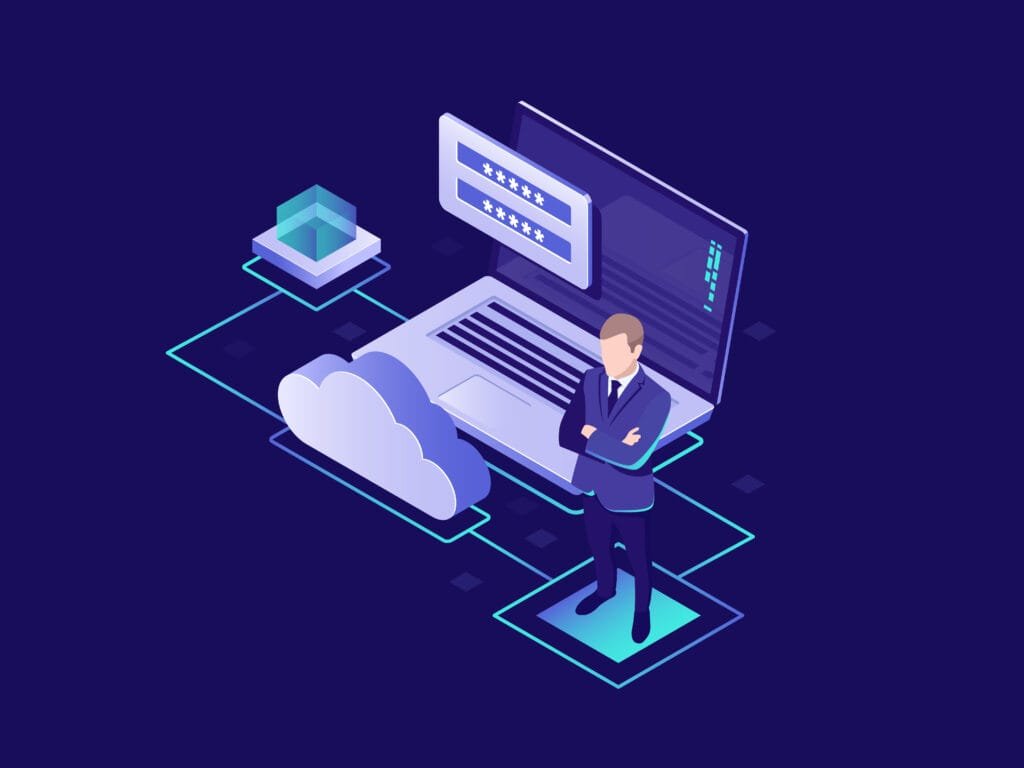10 Essential Steps for Crafting a Foolproof ISO 27001 Cloud Security Policy
Introduction to ISO 27001 Cloud Security
Understanding ISO 27001:
The internationally accepted standard for information security management systems (ISMS) is ISO 27001. It gives businesses a structure for handling and protecting their private data. When it comes to improving data protection in cloud environments, the ISO 27001 Cloud Security Policy becomes a fundamental component of cloud security.
Significance in the Digital Landscape:
Businesses are depending more and more on cloud services for data management, operations, and storage in today’s digitally driven environment. Although cloud technology is incredibly convenient and scalable, there are security risks associated with it additionally. Serving as a beacon of guidance, ISO 27001 provides an organized method for reducing risks and protecting sensitive data that is kept on cloud servers.
Addressing Cloud Security Challenges:
Because of the dynamic nature of the cloud, there are particular security problems. When customized for cloud security, ISO 27001 facilitates comprehension of these issues. It helps businesses to recognize possible risks, evaluate threats, and set up strong controls unique to cloud-based operations.
Framework Components:
The framework of ISO 27001 Cloud Security Policy consists of some best practices, procedures, and methods aimed at ensuring a methodical approach to information security risk management. Through the use of this cloud security framework, businesses may optimize processes, improve data integrity, and provide a robust defense against cyberattacks.
Benefits of ISO 27001 in Cloud Security:
Stakeholder confidence is increased by using ISO 27001 principles in cloud security since it shows a dedication to information security. It encourages a proactive approach to risk management and regulatory compliance, as well as a culture of continuous improvement.
Understanding ISO 27001 Framework
Core Components of ISO 27001:
An organized framework aimed at addressing information security management in a whole is included in ISO 27001 standards. Among its essential elements are:
a. Risk Assessment:
Information security risks are identified, assessed, and prioritized during this first stage. This is a crucial stage in cloud security since it helps identify risks unique to cloud-based operations.
b. Risk Treatment:
Organizations develop strategies to address and reduce risks that are discovered after conducting a risk assessment. To lessen vulnerabilities, this can involve setting encryption, access controls, or data separation into place in a cloud environment.
c. Information Security Controls:
Annex A of ISO 27001 Cloud Security Policy specifies a collection of rules that address multiple aspects of information security. A customized strategy for data protection is ensured by modifying these policies for cloud settings.
Implementing ISO 27001 in Cloud Security:

Organizations must match the principles of ISO 27001 with the unique problems associated with cloud security. This involves being aware of the shared responsibility model, which outlines the roles that the company and the cloud service provider have to play.
Advantages of ISO 27001 Framework in Cloud Security:
- Holistic Approach: A complete strategy for controlling information security risks is provided by ISO 27001, which ensures thorough coverage even in intricate cloud ecosystems.
- Compliance and Assurance: Stakeholders and consumers can be assured by the framework that conformity to ISO 27001 standards provides for meeting regulatory requirements.
- Continuous Improvement: The framework promotes security measures’ constant development, which helps users become more adaptive to changing threats in the dynamic cloud environment.
Challenges in Implementing ISO 27001 for Cloud Security:
- Cloud-Specific Risks: When implementing ISO 27001, particular consideration must be given to risks specific to cloud technology, such as data breaches and misconfigurations.
- Integration Complexity: Because cloud environments are dynamic, integrating ISO 27001 controls into current cloud infrastructures may be difficult.
Importance of Cloud Security Policies
Evolving Landscape of Cloud Technology:
The introduction of cloud computing, which provides scalability, flexibility, and accessibility, completely changed how businesses run. But this change also marked the start of a new phase of security worries. Although advantageous, cloud environments are vulnerable to some risks, including illegal access, data breaches, and service interruptions.
Role of Cloud Security Policies:
As a protection, cloud security policies define best practices, procedures, and recommendations for protecting sensitive data handled and stored in the cloud. These guidelines act as a road map for ensuring the availability, confidentiality, and integrity of vital information assets.
Key Benefits of Cloud Security Policies:
- Risk Mitigation: Policies help in identifying possible hazards in the cloud environment and in defining solutions.
- Compliance Adherence: By ensuring adherence to industry-specific compliance regulations and regulatory norms, they increase stakeholder trust.
- Standardized Practices: Policies create consistent procedures throughout the company, simplifying security precautions and reducing vulnerability.
Addressing Security Concerns:
Cloud security policies address various security concerns prevalent in cloud environments, such as:
- Data Protection: Ensuring data classification, access controls, and encryption to safeguard sensitive information is known as data protection.
- Identity and Access Management: To stop unwanted access, strong authorization and authentication procedures must be put in place.
- Incident Response: Providing protocols for quickly responding to security incidents and limiting the damage is known as incident response.
Tailoring Policies to Cloud Environments:
It is crucial to create regulations that are especially suited for cloud environments. The shared responsibility model, which outlines the obligations of the cloud service provider and the company, must be taken into account by these policies.
Crafting a Foolproof ISO 27001 Cloud Security Policy

Risk Assessment and Analysis
Identifying Cloud-Specific Risks:
Start by evaluating the hazards that come with working in cloud environments. Take into account things like data exposure, illegal access, and service interruptions. To fully understand the distinct risks that cloud computing presents, do a thorough investigation.
Defining Security Objectives
Tailoring Objectives to Cloud Security:
Establish particular security goals for cloud environments based on the risk assessment. While addressing risks unique to the cloud, these aims should be in line with the organization’s larger security objectives.
Establishing Control Measures
Implementing Cloud-Centric Controls:
Utilize ISO 27001 criteria to put in place measures specifically designed for cloud security. These could include strong access controls, encryption techniques, and real-time monitoring to quickly identify and neutralize threats.
Documenting the Policy
Comprehensive Policy Documentation:
Thoroughly record the cloud security policy, including roles, duties, and guidelines. For incident response in the cloud context, identify roles, responsibilities, and escalation protocols.
Training and Implementation
Educating Stakeholders:
Organize thorough training sessions to ensure that everyone involved is aware of and complies with the cloud security policy. Apply the policy methodically, working with all pertinent staff members and departments.
Continuous Monitoring and Review
Ongoing Evaluation and Adaptation:
Provide systems for ongoing evaluation of the efficacy of the cloud security policy. Review and update the policy often to keep up with new developments in technology and growing risks.
Aligning with Compliance Regulations
Regulatory Landscape in Cloud Security:
Industry standards and other legal responsibilities interact with the cloud security landscape. Adherence to these regulations is essential to ensure confidentiality, privacy, and confidence among the parties involved.
Embracing Industry Standards:
The basic structure of ISO 27001 is compliant with several compliance standards. It offers a methodical way to deal with compliance needs, ensuring that cloud environments follow rules like GDPR, HIPAA, or PCI DSS.
Key Aspects of Compliance Alignment:
- Data Privacy: Ensuring that cloud operations follow laws about consent, proper processing, and data privacy.
- Security protocols: Putting in place security measures and controls in line with legal requirements for protecting private data.
- Audit and Reporting: Encouraging audit procedures and keeping thorough documents to prove compliance.
Challenges in Compliance Alignment:
- Complexity of Regulations: Because regulatory frameworks are intricate and always changing, it can be difficult to manage and comply with them all.
- Interpretation Variability: When adopting cloud security measures, it is important to take into account the various ways that different areas or businesses interpret the same legislation.
Importance of Compliance-Conscious Cloud Security:
Maintaining compliance not only reduces legal risks but also builds credibility and trust with stakeholders and customers. It demonstrates a dedication to the moral and responsible management of data in cloud computing settings.
Integrating Best Practices
Harnessing Industry Best Practices:
Integrating best practices is essential for improving defenses against evolving cyber threats in the field of cloud security. By implementing these procedures, cloud environments’ security posture is improved.
Notable Best Practices:
- Zero Trust Model: Reducing the possibility of unwanted access by using a zero-trust strategy that constantly authenticates and verifies users and devices gaining access to cloud resources.
- Multi-Factor Authentication (MFA): Adding a degree of protection beyond passwords, MFA must be enforced to access sensitive data or important systems in the cloud.
- Data Encryption: Data encryption protects information from unwanted access by using strong encryption techniques for both data in transit and data at rest.
- Regular Patching and Updates: Making sure security updates and patches are applied on time to reduce vulnerabilities in cloud apps and infrastructure.
Cloud-Specific Best Practices:
- Cloud Configuration Management: Enforcing strict configuration management procedures to avert configuration errors that can reveal confidential information.
- Automated Security Controls: Using automation in cloud settings to monitor continuously and react quickly to security occurrences.
- Third-Party Risk Management: Ensuring that third-party cloud service providers adhere to security standards by actively evaluating and controlling the security risks they provide.
The Role of Employee Awareness
Importance of Employee Education:
Workers are essential to preserving a safe cloud environment. It is crucial to inform and educate employees about possible risks and security best practices.
Understanding Security Risks:
It is crucial to give staff members the knowledge and skills to identify the many security threats that are common in cloud settings. The risks associated with human mistakes can be reduced by awareness of phishing efforts and social engineering techniques.
Training Initiatives:
Conduct regular training sessions focusing on:
- Security Protocols: Inform staff members on secure cloud browsing techniques, data handling, and password hygiene, among other security procedures.
- Response Procedures: Educate employees on how to report suspicious activity, handle security incidents, and follow incident response guidelines.
Encouraging Vigilance:
Encourage your staff to have an accountable and watchful culture. Encourage them to proactively provide any security lapses or vulnerabilities that they happen to see in the cloud environment.
Role of Leadership:
The commitment of leaders is essential in highlighting the need for security awareness. Leaders set the tone for the entire company by supporting security measures and emphasizing the value of staff involvement in upholding a safe cloud environment.
Testing and Improvement Strategies

Continuous Evaluation:
To ensure the cloud security framework’s efficacy and resilience against new threats, regular testing and evaluation are essential.
Penetration Testing:
Regular penetration tests help find vulnerabilities in the cloud infrastructure by simulating actual cyberattacks. This enables companies to proactively fix possible flaws before bad actors take advantage of them.
Vulnerability Scanning:
To find and evaluate vulnerabilities in the cloud environment, put automated vulnerability scanning technologies into practice. Frequent scans help find security flaws and fix them quickly.
Incident Response Drills:
By carrying out tabletop exercises and incident response drills, an organization’s readiness to handle cloud security issues can be evaluated. It enables improving teamwork and reaction protocol refinement.
Metrics and Key Performance Indicators (KPIs):
By defining quantifiable measurements and key performance indicators, businesses may assess how well their cloud security strategies are working. Metrics could include successful patch deployment rates or the time it takes to notice security incidents.
Continuous Improvement Cycle:
Based on the results of the assessment, implement a cycle of continuous improvement. To strengthen the overall security posture, regularly update and improve security measures depending on the results of tests and assessments.
Challenges and Mitigation Approaches
Common Challenges in Cloud Security:
- The complexity of Cloud Environments: It can be difficult to maintain uniform security protocols across a range of platforms and services due to the dynamic and intricate nature of cloud infrastructures.
- Shared Responsibility Model: To prevent gaps in security coverage, it is essential to define roles and responsibilities between the cloud service provider and the business.
- Compliance Alignment: Complying with various industry and regional compliance regulations makes cloud security projects more challenging.
Mitigation Approaches:
- Comprehensive Risk Assessment: To identify and rank possible dangers, carry out comprehensive risk assessments tailored to the cloud environment.
- Clear Communication of Responsibilities: Clearly outline and communicate the organization’s and the cloud service provider’s obligations regarding security precautions.
- Automation and Orchestration: Use orchestration to guarantee consistency and expedite security procedures, as well as automation for security measures.
- Regular Training and Awareness: To reduce vulnerabilities connected to human error, keep staff members informed about cloud security best practices.
Addressing Complexity:
- Standardization of Controls: To reduce complexity resulting from disparate platforms, use uniform security controls and protocols throughout cloud services.
- Third-Party Risk Management: To ensure compliance with security standards, carefully evaluate and manage the risks related to third-party vendors and cloud service providers.
Conclusion
Protecting sensitive data and upholding a secure cloud environment requires creating a thorough and unbreakable ISO 27001 cloud security policy. Organizations may create a strong framework that complies with industry requirements, efficiently reduces risks, and ensures continued security compliance by adhering to five crucial principles.
FAQs
Is ISO 27001 applicable only to cloud security?
ISO 27001 is a standard for information security management systems that can be applied to various contexts, including cloud security.
How often should a cloud security policy be reviewed?
Regular reviews, at least annually, are recommended to ensure the policy remains effective and aligned with evolving threats.
What are the key challenges in crafting a cloud security policy?
Common challenges include balancing usability with security, aligning with diverse compliance requirements, and ensuring employee adherence.
Can a one-size-fits-all approach work for every organization’s cloud security policy?
No, each organization’s security needs are unique. Tailoring policies to specific requirements is crucial for effectiveness.
What role does employee training play in maintaining a secure cloud environment?
Employee training and awareness are critical. Educated staff can significantly reduce security vulnerabilities and risks.







